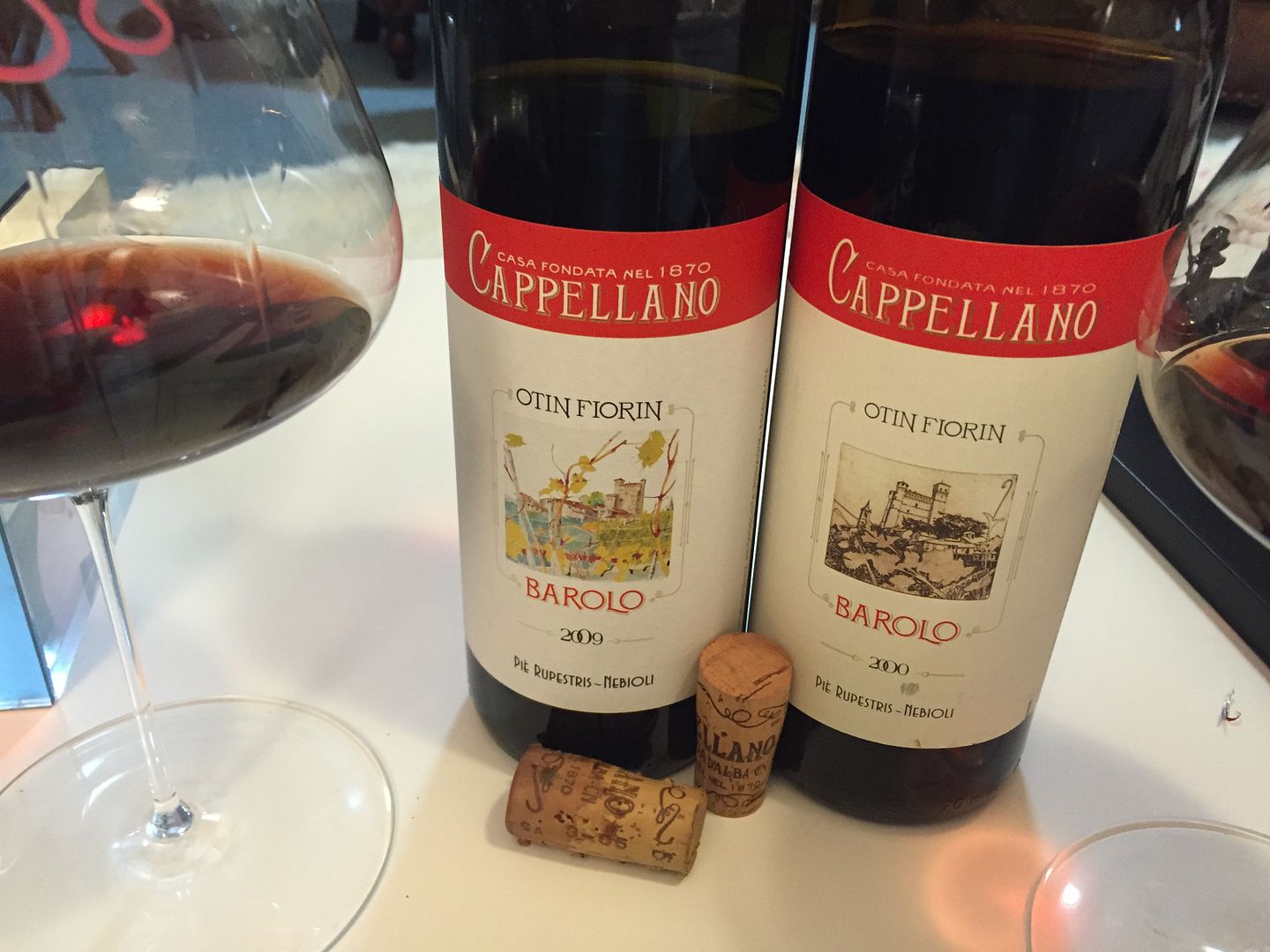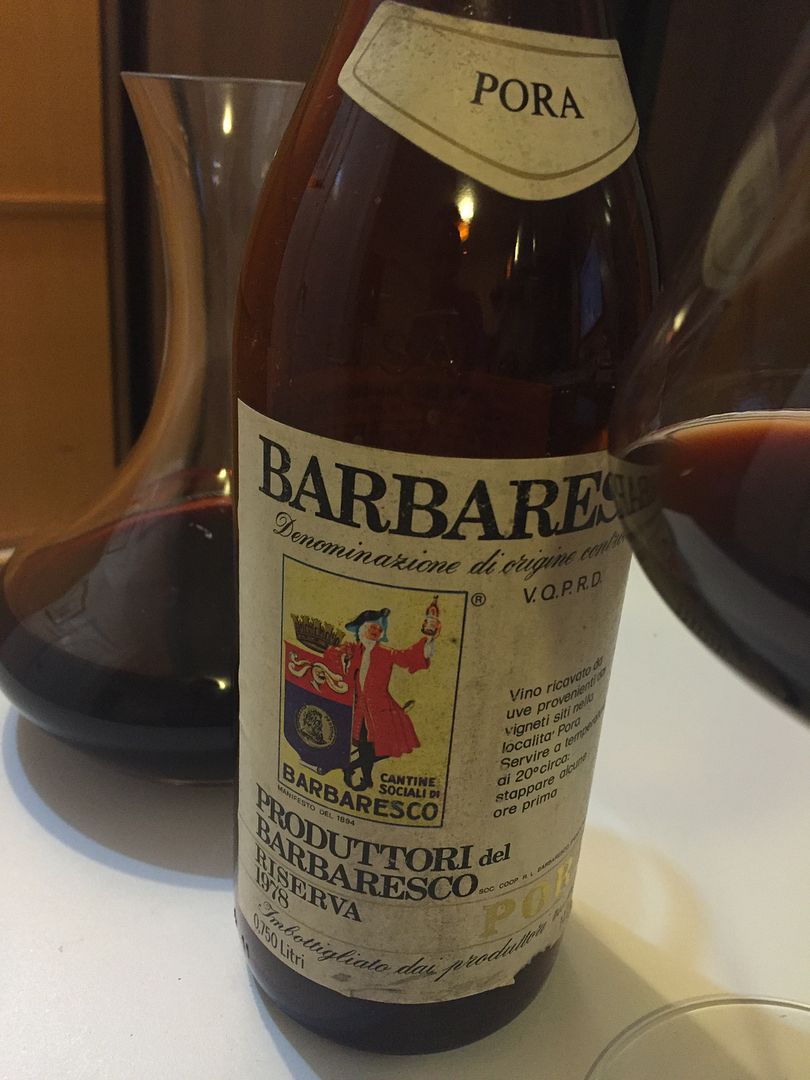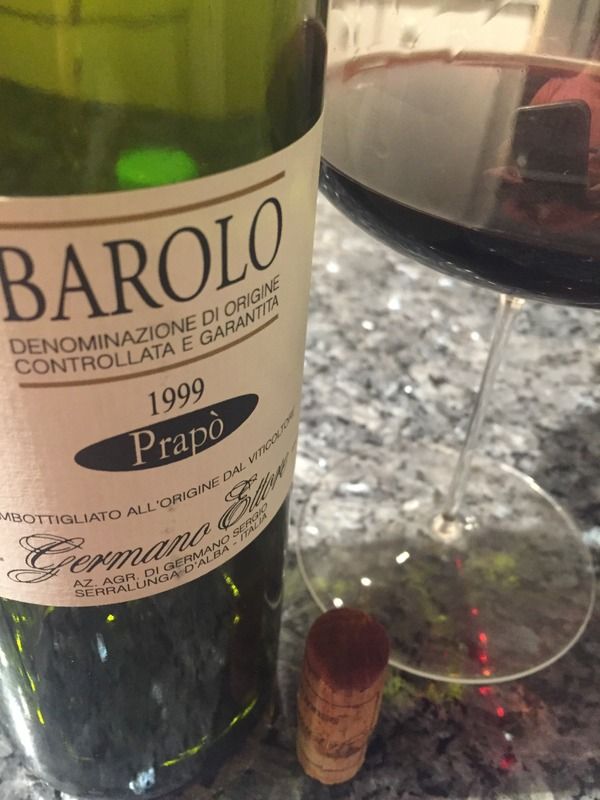Out of interest (and obviously it's complicated and varies by producer and vintage), but broadly speaking what kind of age range is your sweet spot for opening good to higher end Barolo? 10 years, 20 years, 40 years ?
I'm not Jamie, but I'll put some thoughts in.
Barolo can be quite approachable on release, such that it can be interesting (and not unpleasant) to taste a younger version of a fully mature wine, especially where the producer hasn't changed their style much over that period. Marcarini springs to mind as the sort of producer where such a comparison might be interesting.
Often, especially in normal/vin de garde vintages, the wines can shut down very hard as the initial fruit eases back, revealing the core of tannins and acid. A good decant can help coax more out of it, but it's not guaranteed to turn it into a pleasurable wine. How long for? It varies (doesn't it always!). Some warm vintages such as 2000 have a high proportion of wines that never really shut down. They may last, but many get drunk because they could be drunk with pleasure whilst waiting for the 1996s etc. Those that shut down seem to do so 1-4 years after release, but I don't want to imply there is any precision to this.
When do they come out of their shell? Well some don't, so be warned. The ones that emerge healthy and well though are the ones that hook many of us into the nebbiolo habit. The tannins eventually drop away or at least recede sufficiently, what emerges from behind the tannins is often light delicate, ethereal and remarkably often quite unique. Sometimes a little primary fruit remains, but the sweetness seems more high toned / aromatic and indeed sniffing an old nebbiolo can be as enjoyable as tasting it. How long does it take? Depending on producer I would have said 25-40 years being a sweet spot for that delicate re-awakening, but again don't take that as precision. There are some stunning 1950s wines and some dead 1990s wines. Cellartracker can be useful for seeing recent tasting notes on not just that vintage but adjacent ones, giving you a rough feel for it. Bottle variation will probabaly give a number of disappointments, but there can be some very pleasant surprises as well.
Finally the times (or at least the wines) are a changing, and have been for a couple of decades. The modernist movement came in to make the wines more appealing / approachable and barring some disastrous experimentation, I'll concede they are often more approachable (not for people sensitive to French oak though). Longevity? I believe that was part of the compromise but we'll see, with many still going well after 2 decades. Indeed Modernist vs Traditional was only black and white for a handful of producers at the extremes, and these days the lines are really blurred. With respect to TiggerK's question, I believe this is an almost across the board note of caution about longevity of wines produced currently and over the last decade or two.
Wine Berserkers had a wonderful thread set up and updated by Pat Burton, a kind of Wiki page for who sits where on the spectrum. It isn't (and never was intended) as a quality indicator, juts a style indicator. There are good and less good producers all the way across the spectrum. Some producers themselves have changed - Fontanafredda have been pretty average for decades (but at least they appear to be trying now) but go back to the 1950s and 1960s and they had a very strong negociant / grape buyer position and a 1956 or 1958 can be stunning. Marchesi di Barolo have followed a similar path, though sad to say, I see the trend continuing towards fat, dumb and happy mediocrity, milking the growing number of tourists that are making it to Barolo village. I do hope they turn things around, as it was one of their Barolo wines that ignited the brains of the operation's interest in Nebbiolo (and wine other than Shiraz / Chardonnay) so they still hold a good memory. Vallana are in some ways similar, but more remarkable, for these were cheap wines on release, yet matured into some genuinely great wines. It's commonly believed that the greatness involved some skillful blending in of wines from elsewhere (Aglianico / Taurasi the prime suspect) and that their quality dropped off when the legislation tightened up to prevent the practice. They aren't cheap now, but if you see a 1950s or 1960s Vallana cheaper that AUD 150 then snap it up and then apologise to the seller. There are also some producers who are no longer producing wine, but whose wines have lasted. I'm not good on these, but a punt can be productive.
I reckon that bets could be nicely hedged at such an event, but sensible use of flights. Much as I hate the approach (I get confused, even stressed

) having multiple glasses on the table allows the wines to develop in the glass. Some do blossom and others fade, but beyond 3 glasses in front of me and I can feel a bit overwhelmed. I'd certainly receommend a place that will do you a really easy-paced meal, the sort that might start at 12 and finish at 4. I don't think Nebbiolo is a wine that suits cursory appreciation.
Finally, another controversial subject. Decanting / aeration. Many in the US favour a long decant - maybe half a day, to coax the wines out. The champions of this approach argue that nebbiolo is really very robust to air, despite it's delicacy. Indeed it has to be quite durable considering some of the 'cellaring' conditions in Italy. I'm not entirely convinced but have seen some evidence to support this... but also older wines that have faded fast after opening.
If you do go ahead with this, may be cork gods be with you, and you get a really good success rate. If you do it will be a very memorable event.
regards
Ian




